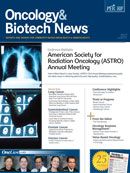Publication
Article
Oncology & Biotech News
Continuing Chemotherapy to Near Death Offers No Benefits in Older Patients With Advanced Lung Cancer
Author(s):
An aggressive approach to care involving the continuation of chemotherapy within 2 weeks of death does not improve survival in elderly patients with metastatic NSCLC.
Akiko M. Saito, MD, PhD
New data show that an aggressive approach to care involving the continuation of chemotherapy within 2 weeks of death does not improve survival in elderly patients with metastatic non—small cell lung cancer (NSCLC). That approach also markedly reduces the use of palliative hospice care.
“It is imperative that physicians present honest, individualized, evidence-based information to patients making treatment decisions near the end of life about the expected risks and benefits of chemotherapy,” said Akiko M. Saito, MD, PhD, with the National Hospital Organization at Nagoya Medical Center in Aichi, Japan, and colleagues.
The researchers evaluated the effect of aggressive treatment on survival in Medicare patients aged ≥65 years who died ≥3 months after having been diagnosed with advanced NSCLC between 1991 and 1999.
The cohort included 4345 patients who never received chemotherapy; 3235 patients who received standard chemotherapy, but not within 2 weeks before they died; and 299 patients who were still receiving chemotherapy within 14 days of death.
Patients who received chemotherapy had a 2-month increase in overall survival. However, patients who were still receiving chemotherapy within 14 days of death had no survival benefit as shown by 3 statistical methods, which included Cox proportional-hazards regression analysis, propensity scores, and instrumental variable analysis.
Also, 80.6% of patients receiving chemotherapy near the end of life entered hospice, compared with 51.6% of patients receiving standard chemotherapy and 50.8% of patients who received no chemotherapy (P <.001). The aggressive-care group was also more likely than the other 2 groups to be admitted to hospice for 3 or fewer days.
The study also found geographic variation in the use of chemotherapy but not in clinical outcomes. Saito and associates said the finding may mean that physician “practice styles” and not associated clinical outcomes may explain aggressive treatment decisions near the end of life. The researchers noted that their study population was a large, geographically diverse, representative sample of elderly patients with advanced NSCLC.
Because only Medicare patients aged ≥65 years were included, however, the findings do not necessarily apply to younger patients and patients insured by a health maintenance organization, they said. On the other hand, given that nearly two-thirds of cancers occur in patients who are aged ≥65 years, Medicare covers most cancer patients in the United States.
In addition, the study data are from patients who died >10 years ago before the availability of modern targeted therapy, including epidermal growth factor inhibitors.
The American Society of Clinical Oncology’s Health Services Research Committee has stated that treatment can be recommended in metastatic cancer until the patient is near death in the absence of improved survival, provided that it improves quality of life. However, this study shows that aggressive end-of-life treatment in patients with advanced NSCLC does not satisfy this criterion and may actually lead to an adverse outcome, such as a reduced likelihood of hospice admission.
Saito AM, Landrum MB, Neville BA, Ayanian JZ, Earle CC. The effect on survival of continuing chemotherapy to near death. BMC Palliat Care. 2011;10:14. doi:10.1186/1472-684X-10-14.

































%20(2)%201-Recovered-Recovered-Recovered-Recovered-Recovered-Recovered-Recovered-Recovered-Recovered-Recovered-Recovered-Recovered-Recovered-Recovered-Recovered-Recovered-Recovered.jpg?fit=crop&auto=format)
%20(2)%201-Recovered-Recovered-Recovered-Recovered-Recovered-Recovered-Recovered-Recovered-Recovered-Recovered-Recovered-Recovered-Recovered-Recovered-Recovered-Recovered-Recovered.jpg?fit=crop&auto=format)